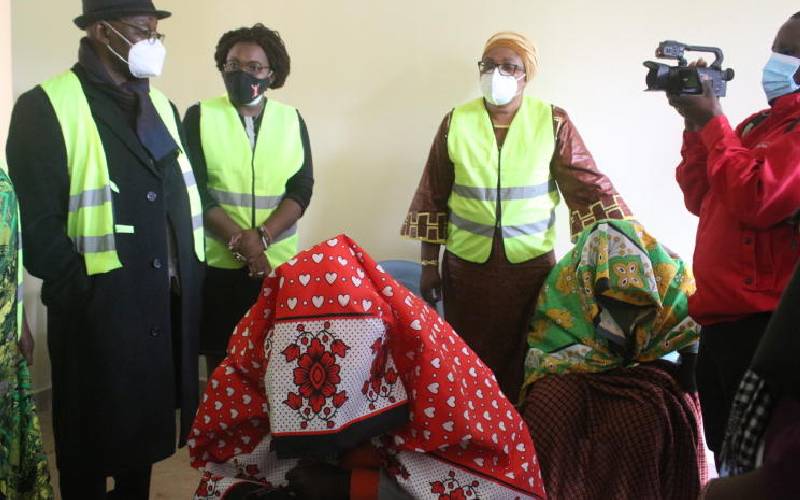
Kisii Governor James Ongwae, Youth and Gender Affairs Chief Administrative Secretary Rachel Shebesh and Kisii Woman Representative Janet Ongera talk with some of the Gender-Based Violence victims at the newly built Kisii Gender-Based Violence Rescue Center.[Sammy Omingo,Standard]
Gender-based violence leaves a sour taste in the mouth of victims and their relatives. Unless properly counseled, gender based violence may leave permanent emotional scars in victims and their kin. Sometimes it affects the way victims relate with the opposite sex and react to ordinary circumstances.